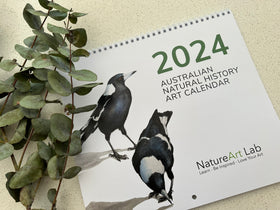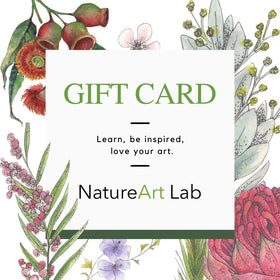
Julia Landford on 'The How and Why of Nature Journaling' - by Jennifer Pearson, President, Australian Association of Environmental Educators (AAEE)
The Australian Association for Environmental Education was delighted to host Julia Landford's presentation of the powerful learning strategy 'Nature Journaling'.
ACT Environmental Educator for 2019, Julia Landford, Founding Director of Nature Art Lab in Canberra shared her expertise and inspiration for nature journaling. As Julia says, “There is nothing like a walk in nature for calming the mind and reminding us the world is a wonderful place!".
Nature journaling provides an avenue for learning to see and understand nature, as well as for recording personal memories of nature experiences. Julia has been teaching nature journaling for several years, and established a natural history art school offering a range of art courses and nature tours inspired by nature. This presentation focused on why nature journaling practices are so important in our contemporary lifestyles - for ourselves and our children.
This webinar was a progressive exploration of techniques of observation 'about and in' nature to a deeper level revealing the manner in which a knowledgeable guide can lead others to be enthused about learning. The opportunities to sit quietly and truly engage with an aspect of an environment does take planning and for many this is a challenge but the rewards are great.
Julia suggested that for most beginning nature journaling it can be enough to just focus on a found object, such as a leaf, which has a myriad of textures, shapes and colours. This technique is also used in science to help children with observation and categorisation. Julia carefully lead the conversation from a simple recording with pencil to more informed recording of size, location, texture techniques, colours, botanical names, reflections and poetry. Julia shared a range of her own nature journaling images, as well as a few examples created by others who had attended her workshops. One concept that she did strongly endorse was that 'Nature Journaling' needed to be done in situ to truly record the fullest experience of the senses. The enhanced learning experience of nature journaling, along with curiosity and investigation contribute to a growth mindset.
For those who have used 'Nature Journaling' in their work this was an inspirational confirmation of the reasons why they continue with this process and Julia cited international research to back up the mental health and wellbeing benefits and learning growth that happens. With over 80 participants in attendance (and around 300 people interested in this presentation) the overwhelming sentiment was of gratitude and inspiration for this thoughtful learning circle. "Thank you Julia! That was amazing and very insightful!"
This webinar can be found on the AAEE website.




Leave a comment